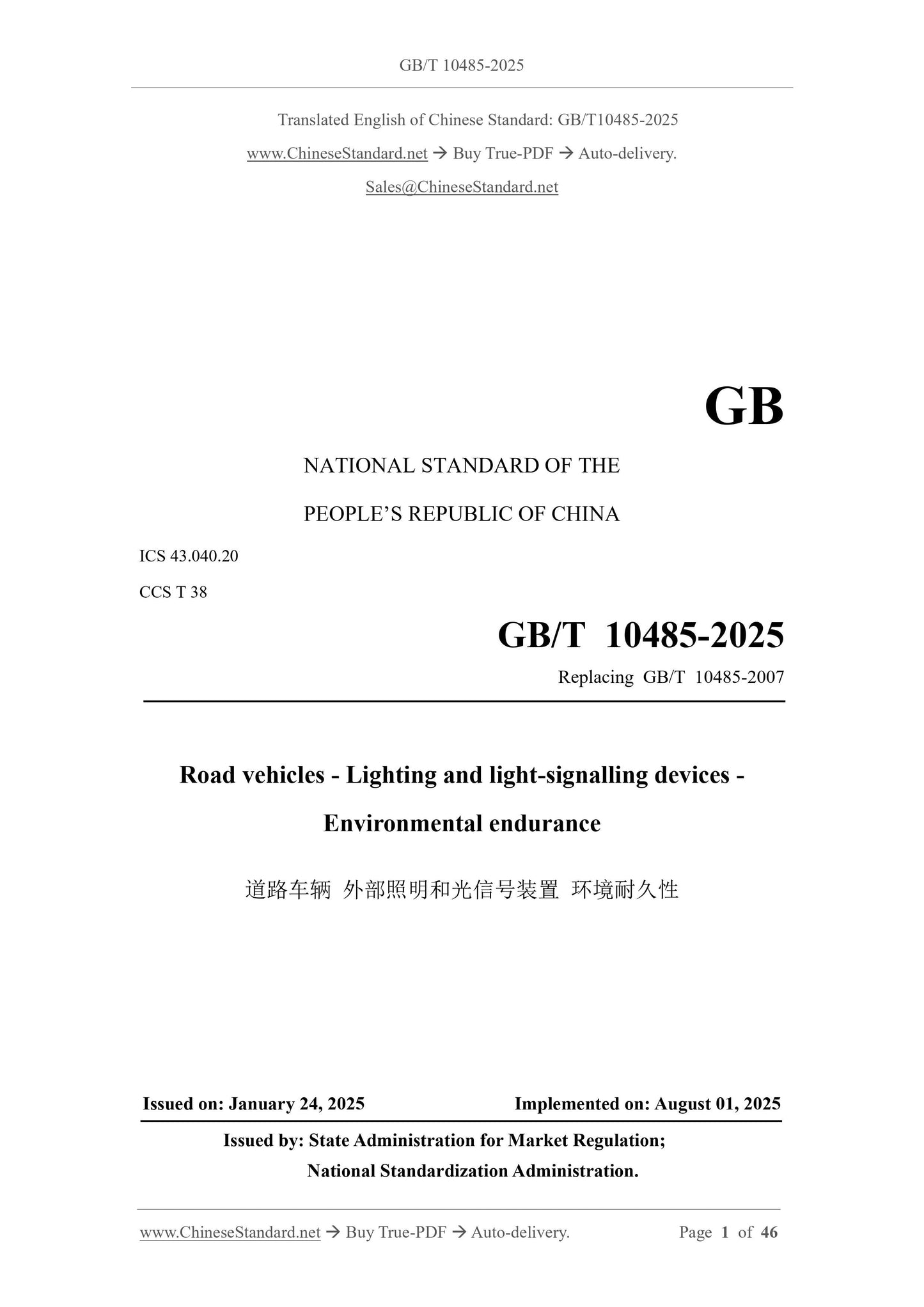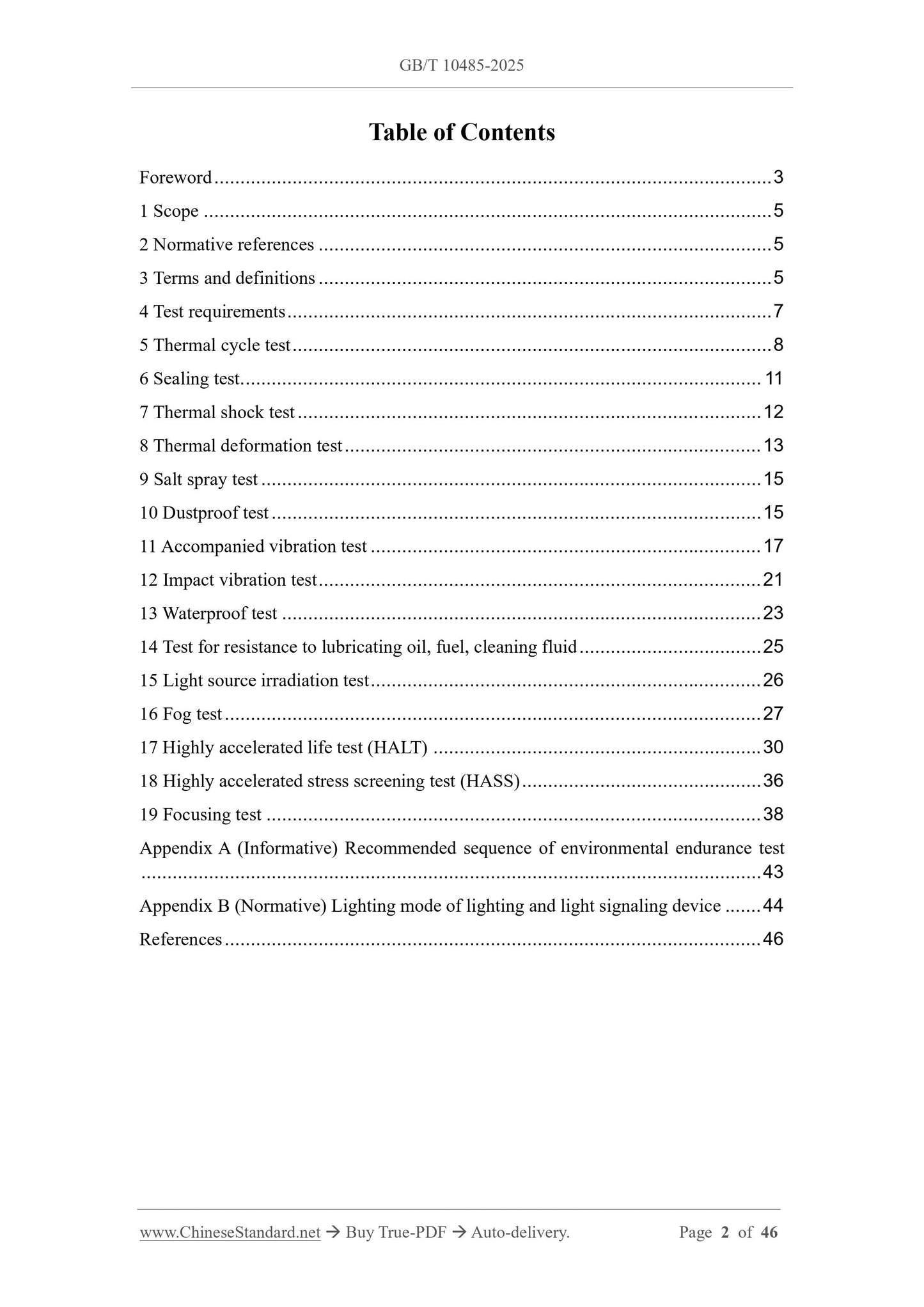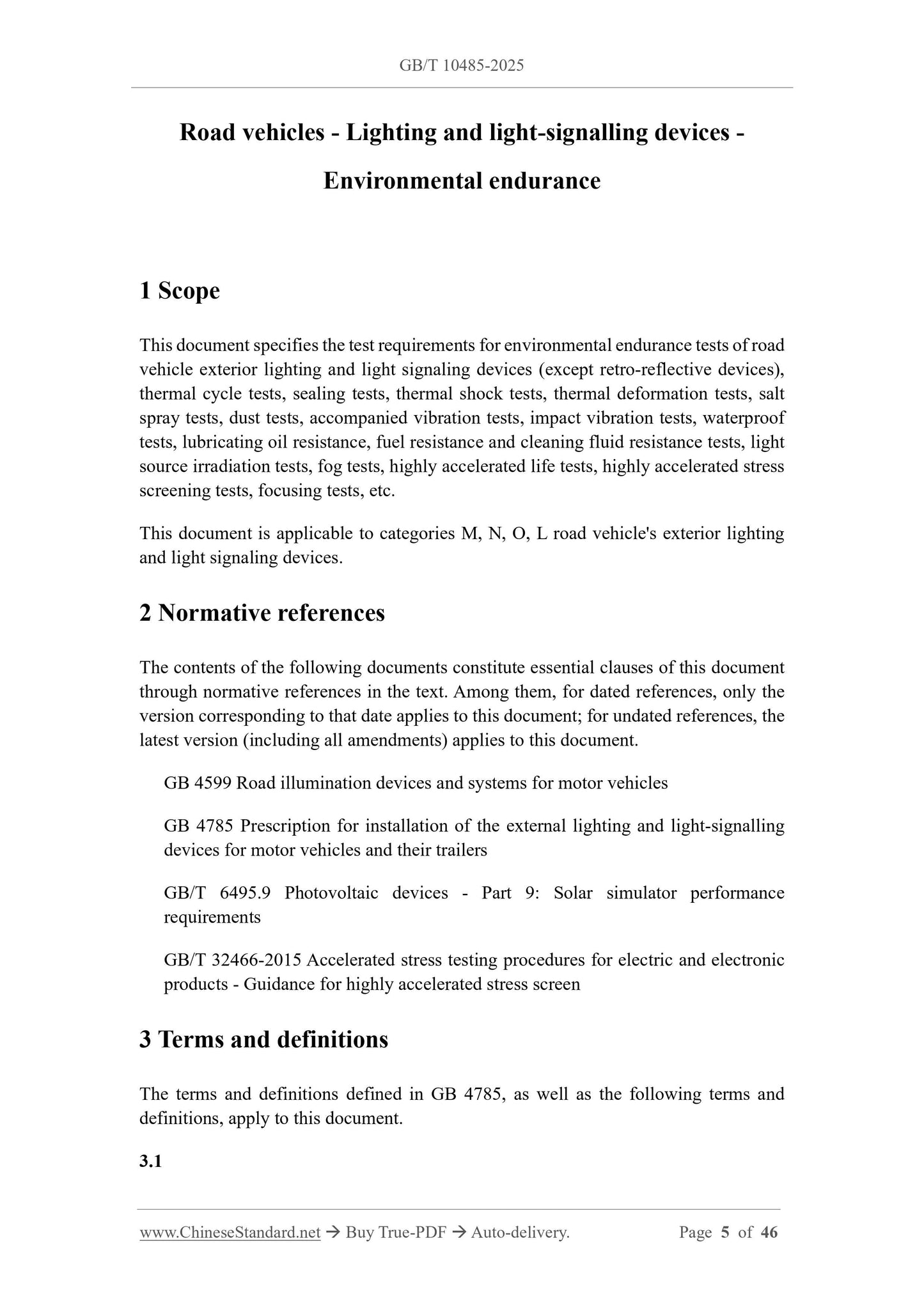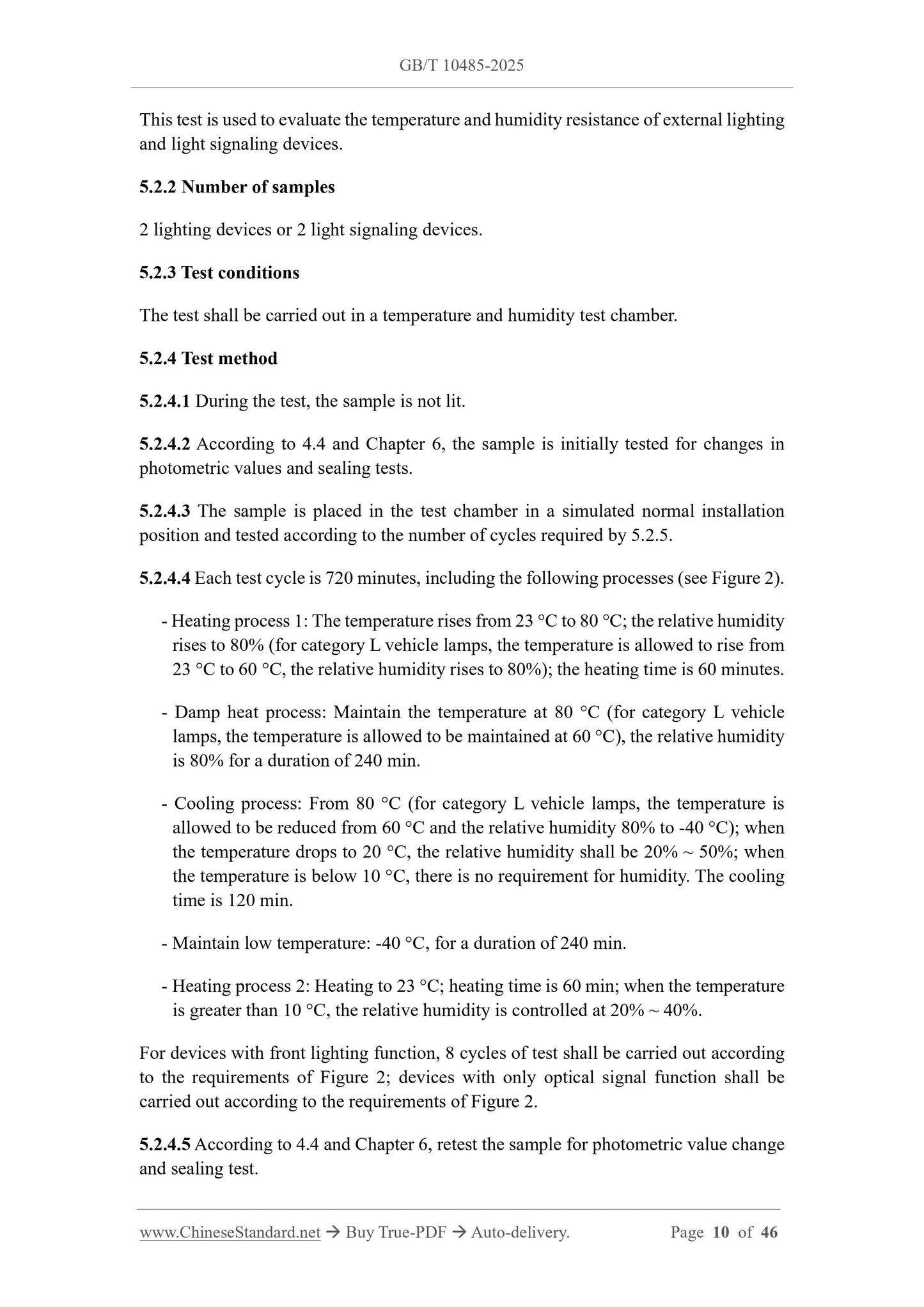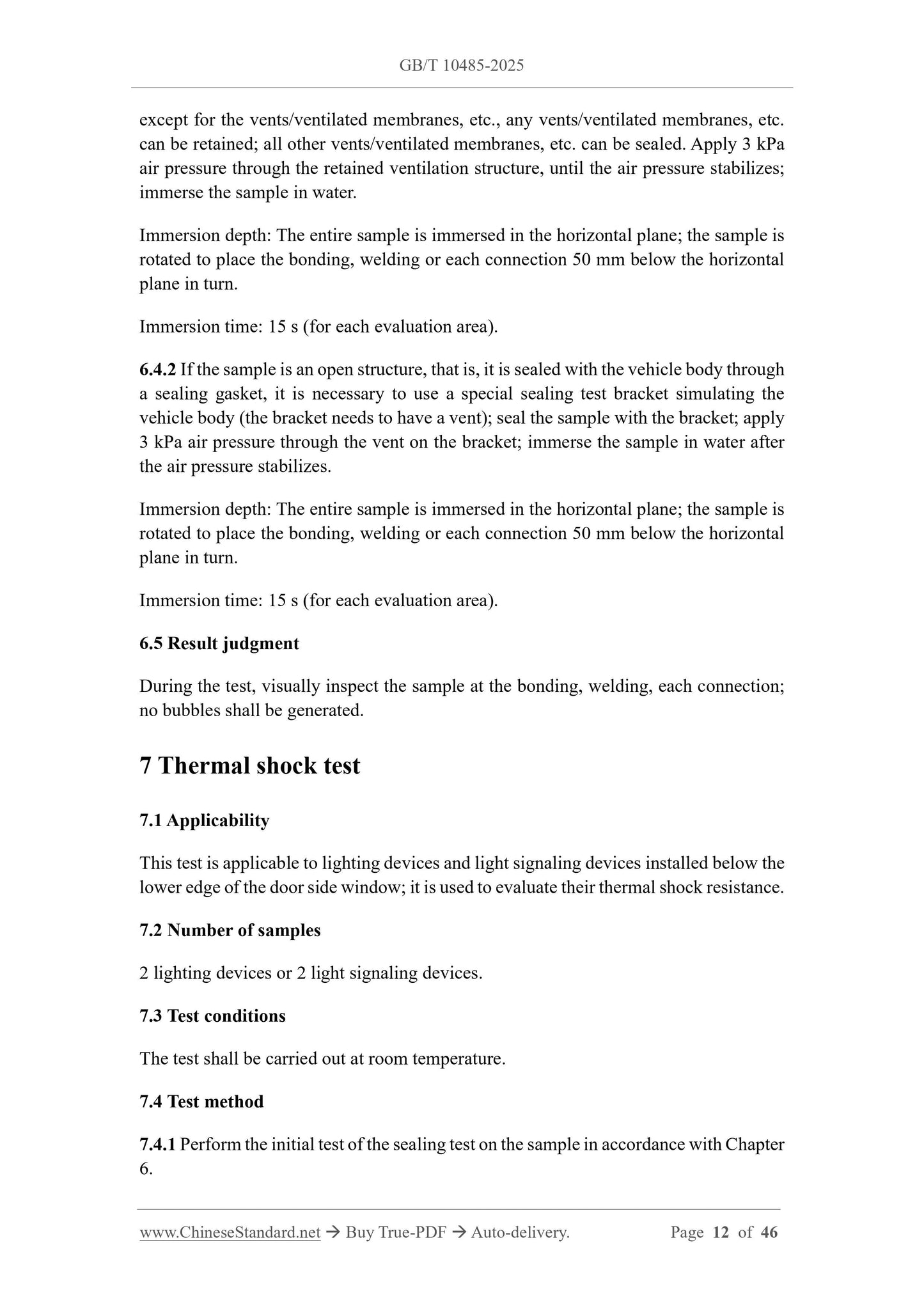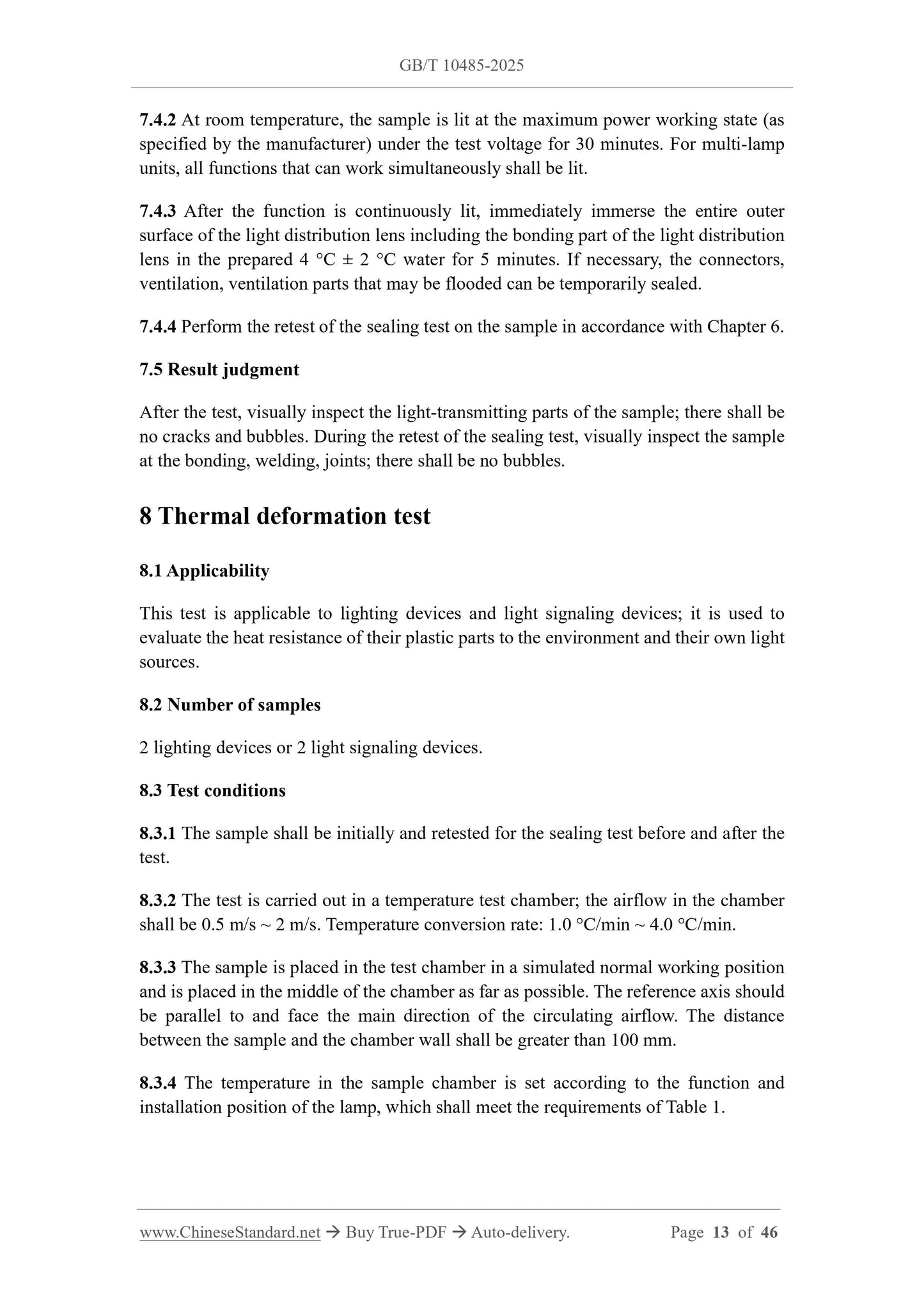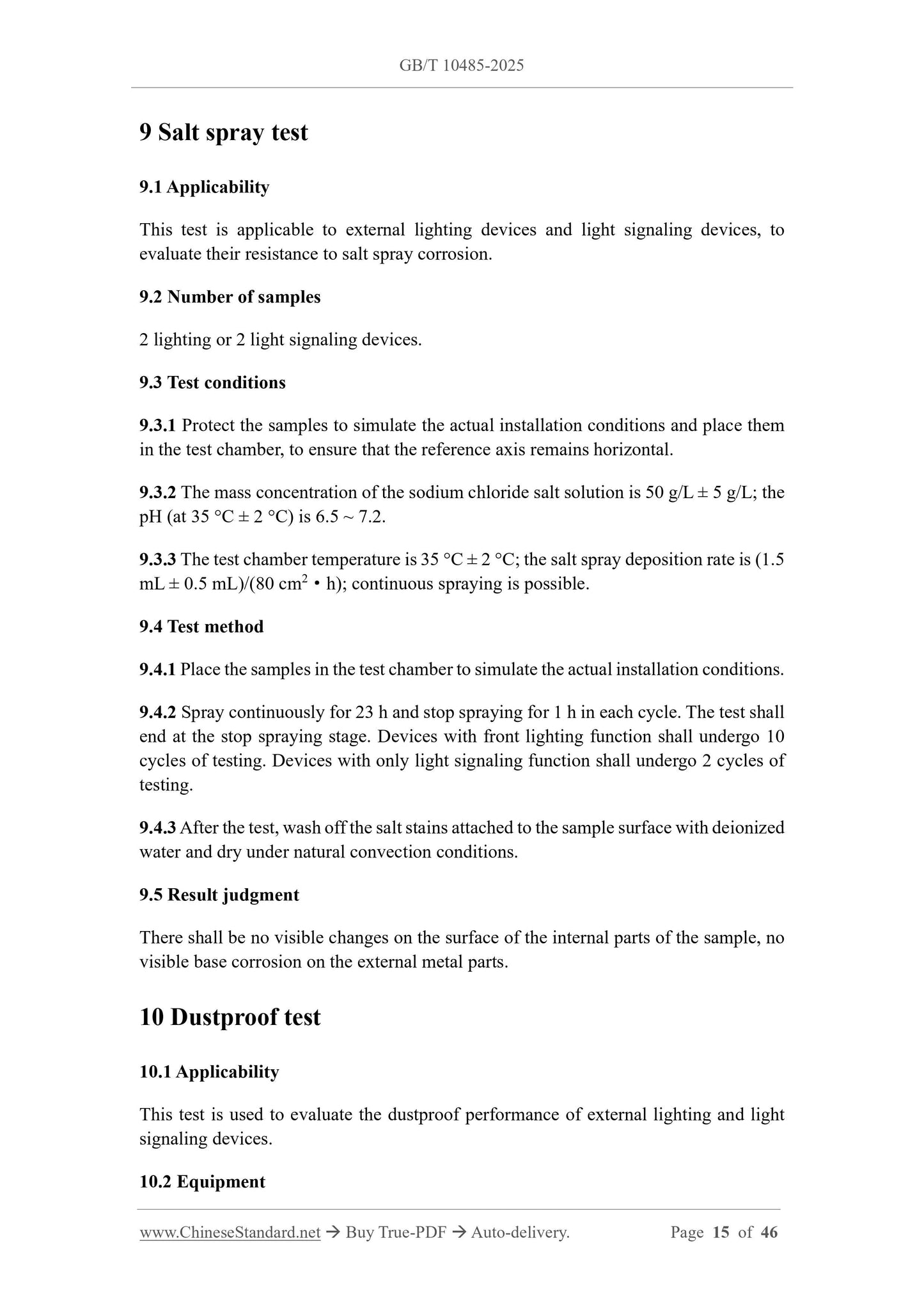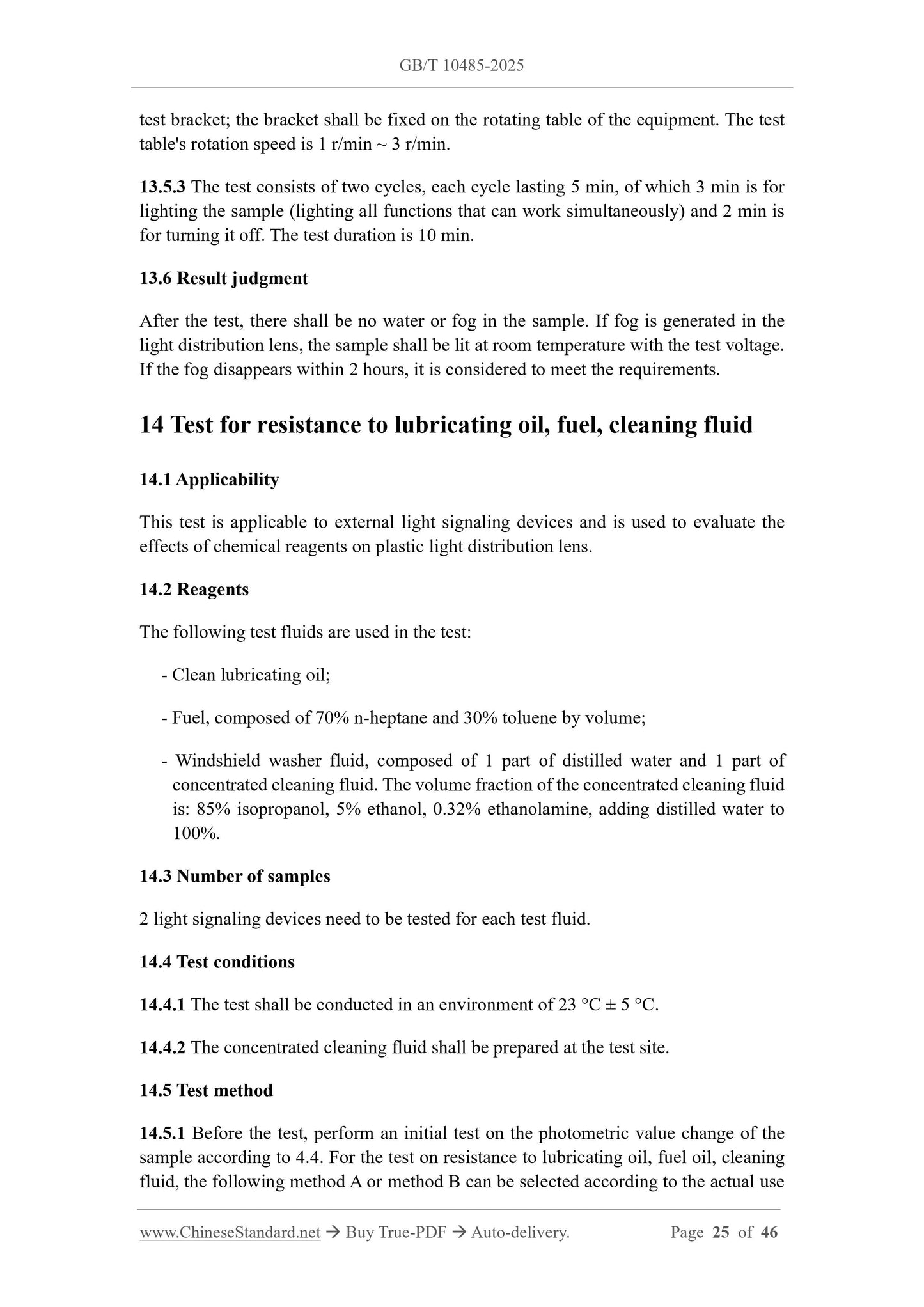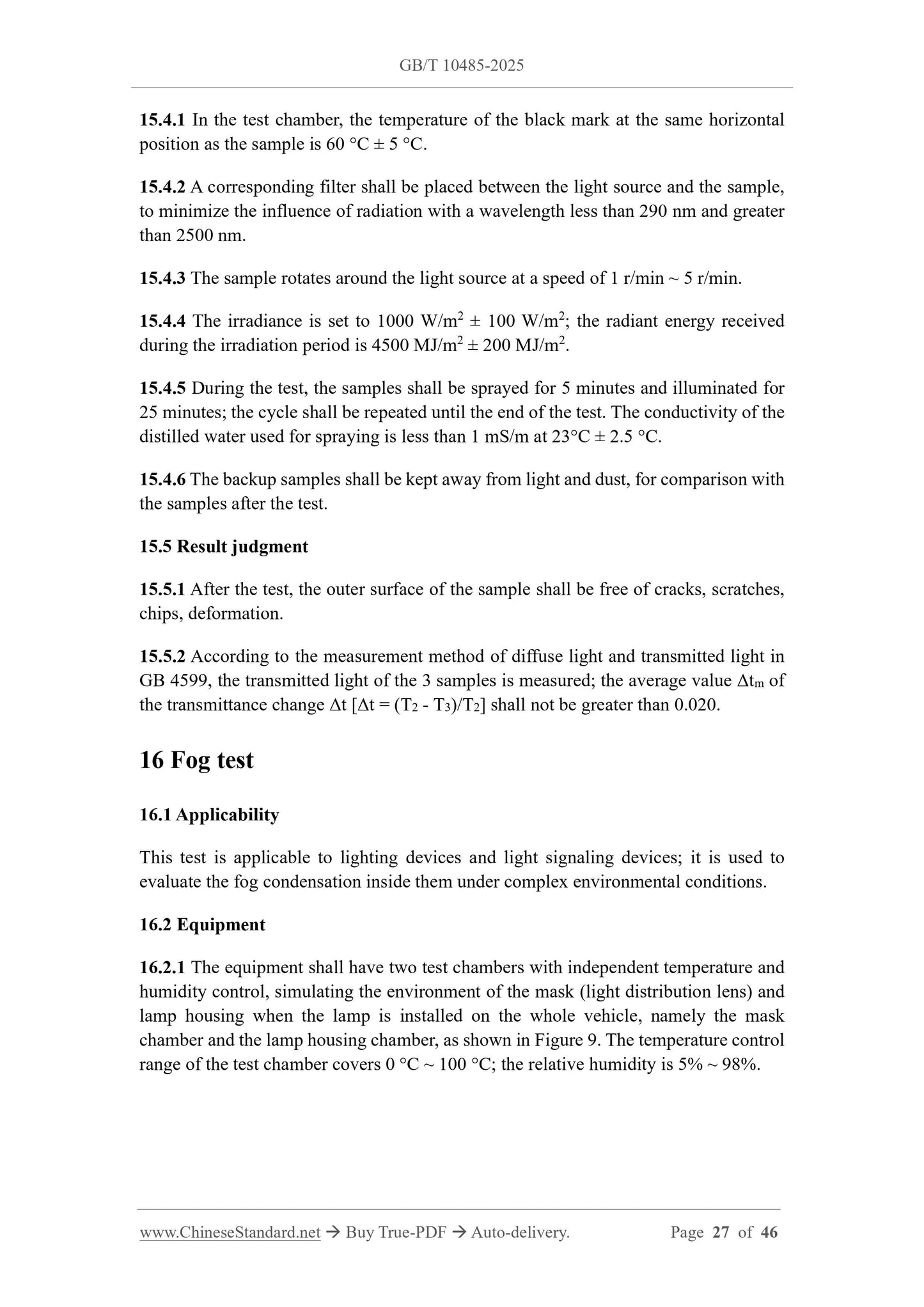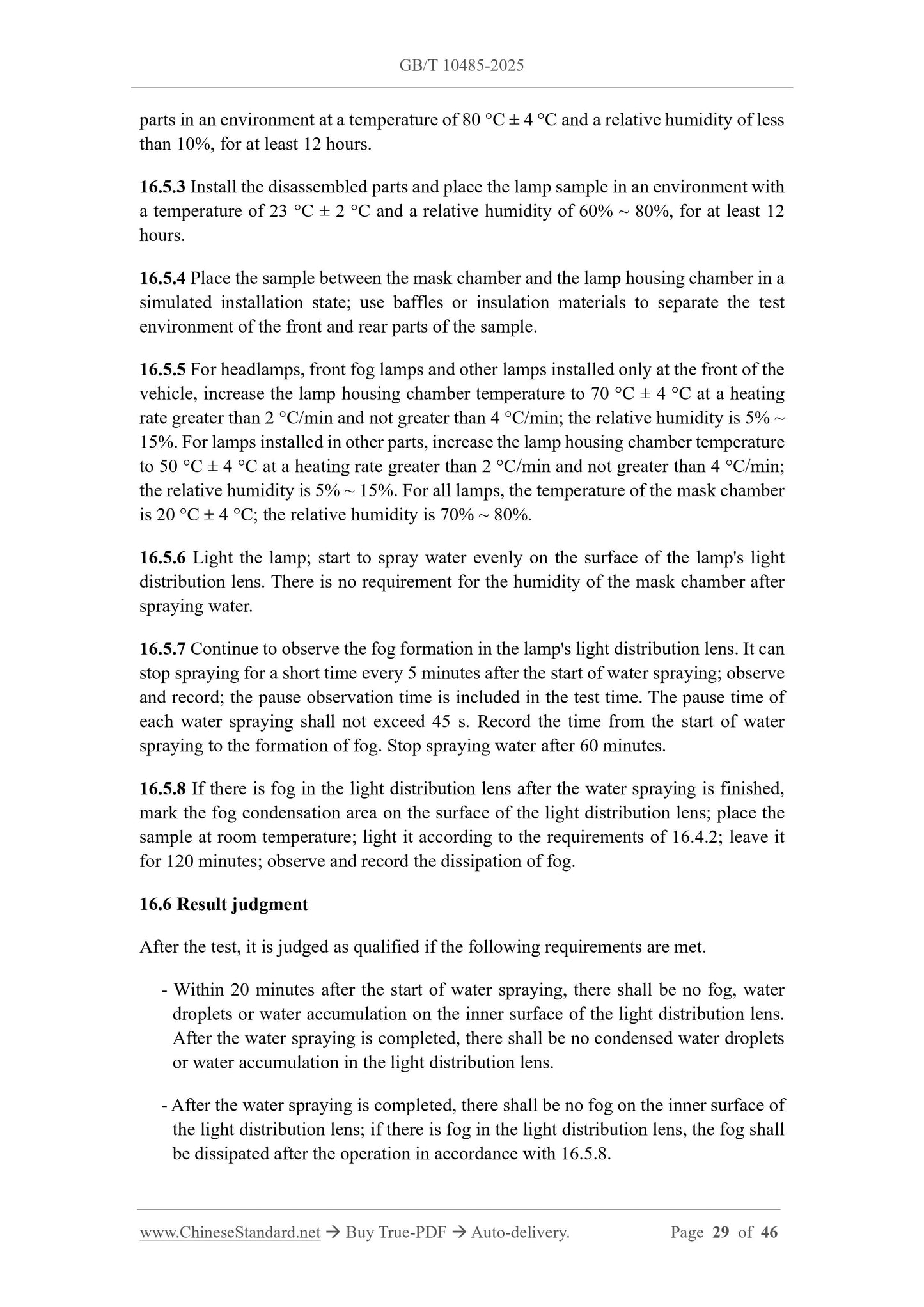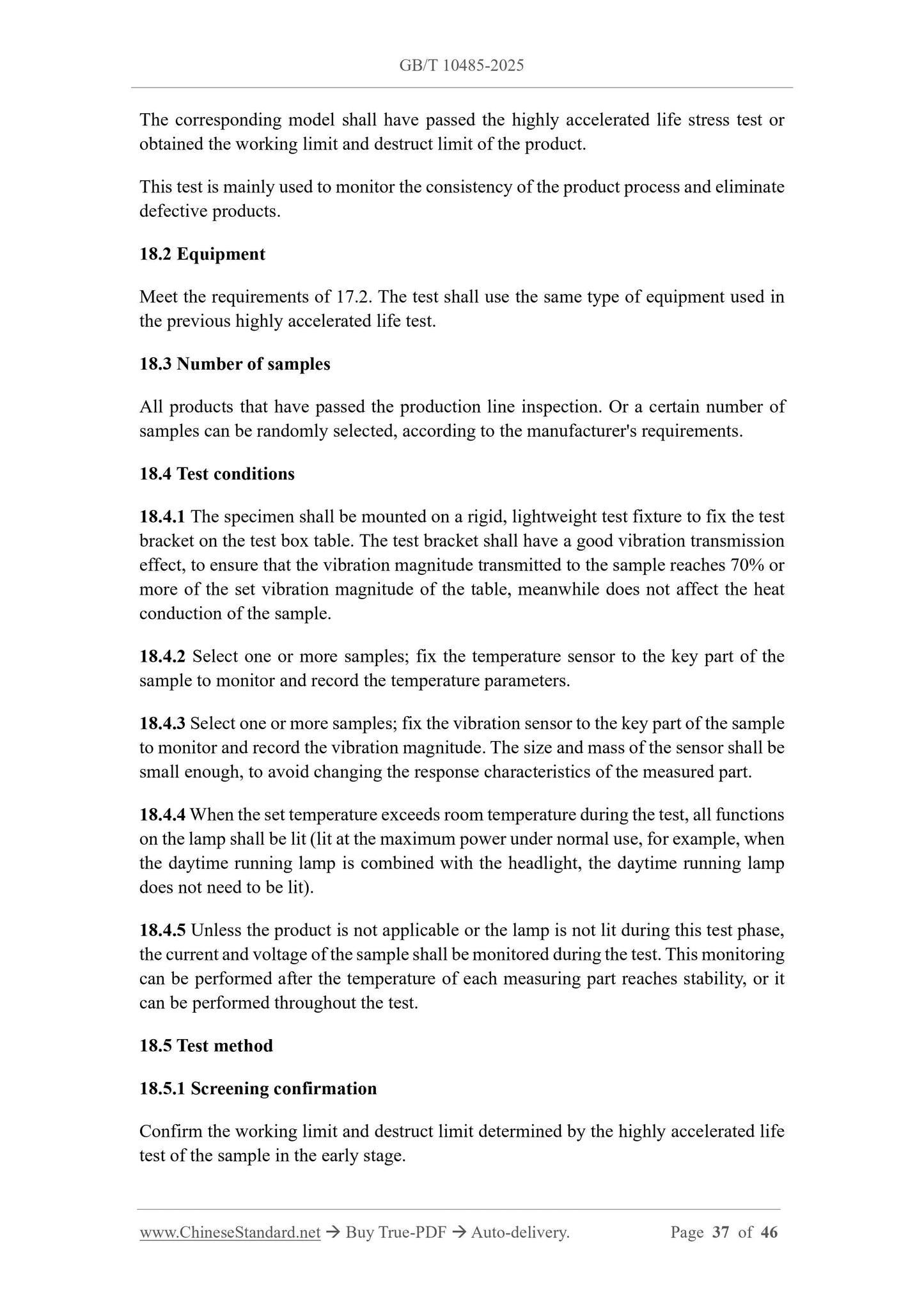1
/
of
12
www.ChineseStandard.us -- Field Test Asia Pte. Ltd.
GB/T 10485-2025 English PDF (GB/T10485-2025)
GB/T 10485-2025 English PDF (GB/T10485-2025)
Regular price
$650.00
Regular price
Sale price
$650.00
Unit price
/
per
Shipping calculated at checkout.
Couldn't load pickup availability
GB/T 10485-2025: Road vehicles - Lighting and light-signalling devices - Environmental endurance
Delivery: 9 seconds. Download (and Email) true-PDF + Invoice.Get Quotation: Click GB/T 10485-2025 (Self-service in 1-minute)
Newer / historical versions: GB/T 10485-2025
Preview True-PDF
Scope
This document specifies the test requirements for environmental endurance tests of roadvehicle exterior lighting and light signaling devices (except retro-reflective devices),
thermal cycle tests, sealing tests, thermal shock tests, thermal deformation tests, salt
spray tests, dust tests, accompanied vibration tests, impact vibration tests, waterproof
tests, lubricating oil resistance, fuel resistance and cleaning fluid resistance tests, light
source irradiation tests, fog tests, highly accelerated life tests, highly accelerated stress
screening tests, focusing tests, etc.
This document is applicable to categories M, N, O, L road vehicle's exterior lighting
and light signaling devices.
Basic Data
| Standard ID | GB/T 10485-2025 (GB/T10485-2025) |
| Description (Translated English) | Road vehicles - Lighting and light-signalling devices - Environmental endurance |
| Sector / Industry | National Standard (Recommended) |
| Classification of Chinese Standard | T38 |
| Classification of International Standard | 43.040.20 |
| Word Count Estimation | 38,359 |
| Date of Issue | 2025-01-24 |
| Date of Implementation | 2025-08-01 |
| Issuing agency(ies) | State Administration for Market Regulation, China National Standardization Administration |
Share
